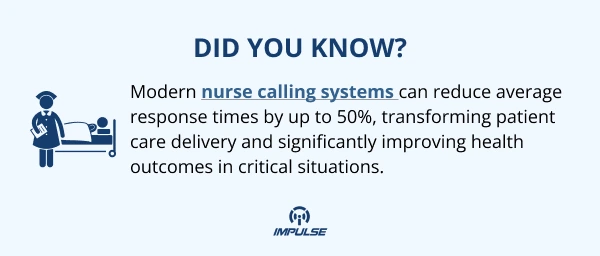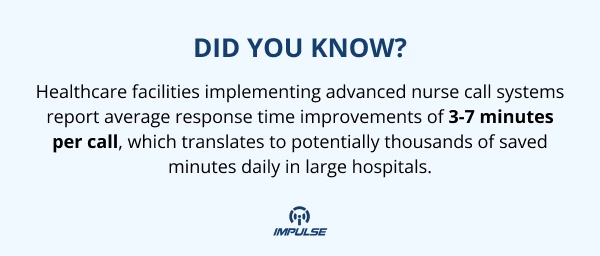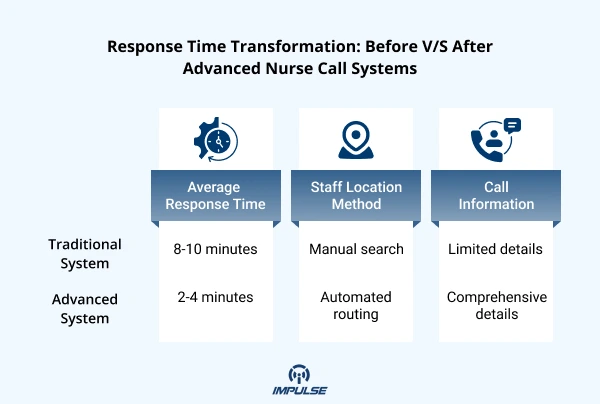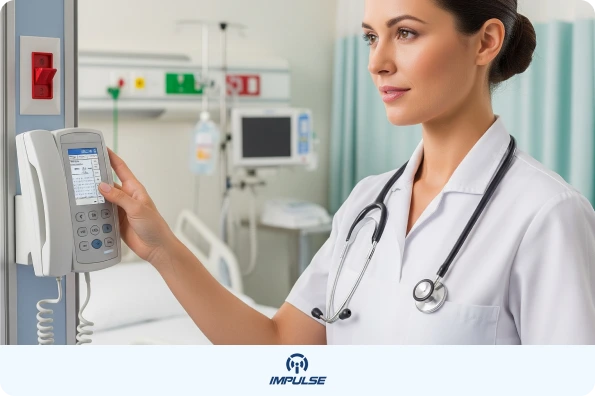Healthcare facilities face mounting pressure to deliver exceptional patient care while managing increasing operational demands. Central to this challenge is the critical need for rapid, reliable communication between patients and healthcare staff. When emergency situations arise, every second becomes precious, and the efficiency of hospital communication systems directly impacts patient outcomes, staff productivity, and overall healthcare delivery quality.
Modern healthcare environments require sophisticated communication infrastructures that can handle complex workflows, prioritize urgent calls, and ensure seamless coordination among medical teams. Traditional communication methods, while functional, often fall short of meeting these demanding requirements, creating gaps that can compromise patient safety and operational efficiency.

The Critical Need for Faster Hospital Response Times
Every second counts in healthcare. When a patient presses a call button, the difference between a 30-second response and a 5-minute delay can mean the difference between life and death. Hospital administrators and healthcare professionals are increasingly recognizing that traditional communication methods are insufficient for meeting the demands of modern patient care.
Emergency situations demand immediate attention, yet many healthcare facilities still rely on outdated communication systems that create bottlenecks and delays. The consequences of slow response times extend beyond patient safety concerns – they impact staff efficiency, increase liability risks, and diminish overall patient satisfaction scores.
Understanding Modern Nurse Calling Systems
The Evolution of Hospital Communication Solutions
Hospital nurse call systems have undergone a remarkable transformation from simple buzzer systems to sophisticated, integrated communication networks. These advanced systems represent a paradigm shift in how healthcare facilities manage patient requests, emergency calls, and staff coordination.
Modern nurse call solutions incorporate multiple communication channels, real-time tracking capabilities, and intelligent routing algorithms that ensure the right caregiver receives the right information at the right time. The integration of wireless technology has eliminated the constraints of traditional wired systems, providing unprecedented flexibility and coverage throughout healthcare facilities.
Key Components of Advanced Nurse Call Systems
The backbone of any effective nurse calling system includes several critical components working in harmony:
Patient Interface Devices: The Bedside Station with Handheld (IMP-NURCL-BSH-2) serves as the primary communication point between patients and healthcare staff. This sophisticated device allows patients to make calls and interact directly with caregivers using a portable handset, ensuring accessibility even for patients with limited mobility.
Emergency Call Stations: Specialized environments require dedicated solutions. The Bathroom Call Station provides emergency call capabilities in high-risk areas where patients are most vulnerable. This device enables rapid assistance requests during critical moments when immediate help is essential.
Visual Alert Systems: The Corridor Light functions as both illumination and communication device, providing visual notifications to staff while maintaining the ambient lighting necessary for safe navigation through hospital corridors.
Central Management Systems: The Intelligent Healthcare Communication Host serves as the nerve center, facilitating real-time communication, call management, and comprehensive patient monitoring across the entire healthcare environment.
The Transformative Impact on Hospital Operations
Quantifiable Improvements in Response Times

The implementation of comprehensive nurse calling systems creates measurable improvements across multiple operational metrics:
Reduced Average Response Times: Wireless nurse call systems eliminate the time-consuming process of locating available staff members. Instead of relying on overhead paging systems or manual searches, calls are automatically routed to the nearest qualified caregiver, reducing average response times from 8-10 minutes to 2-4 minutes.
Enhanced Staff Efficiency: Emergency nurse call systems provide staff with detailed information about each call, including patient location, urgency level, and specific needs. This information enables caregivers to prepare appropriate equipment and resources before arriving at the patient’s bedside, eliminating multiple trips and reducing overall response time.
Improved Patient Outcomes: Faster response times directly correlate with improved patient outcomes, particularly in emergency situations where every second counts. Studies indicate that hospitals with advanced nurse call solutions experience 23% fewer adverse events and 18% higher patient satisfaction scores.

Operational Benefits Beyond Response Times
The advantages of modern hospital communication solutions extend far beyond improved response times:
Resource Optimization: The Medical Care Host centralizes communication and call handling, enabling administrators to analyze usage patterns and optimize staff allocation. This central unit manages patient information and communication flows, ensuring efficient resource utilization throughout the facility.
Enhanced Safety Protocols: Advanced systems provide comprehensive audit trails and documentation capabilities, essential for maintaining compliance with healthcare regulations and improving quality assurance processes.
Scalability and Integration: Modern nurse call systems integrate seamlessly with existing hospital infrastructure, including electronic health records, staff scheduling systems, and facility management platforms.
Implementing Advanced Nurse Call Solutions
Strategic Implementation Approach
Successfully deploying hospital nurse call systems requires careful planning and strategic execution. Healthcare facilities must consider existing infrastructure, staff training requirements, and integration capabilities when selecting appropriate solutions.
The implementation process begins with comprehensive facility assessment, identifying high-priority areas where improved response times will have the greatest impact. Emergency departments, intensive care units, and surgical recovery areas typically benefit most from advanced nurse calling systems.
Technology Integration and Staff Training
Modern wireless nurse call systems require minimal infrastructure modifications while providing maximum functionality improvements. Staff training programs ensure seamless adoption and optimal utilization of new communication capabilities.
The integration process includes connecting nurse call solutions with existing hospital communication solutions, ensuring compatibility with current workflows and procedures. This integration enables healthcare facilities to leverage existing investments while significantly improving communication efficiency.
Measuring Success and Continuous Improvement
Implementation success is measured through multiple key performance indicators:
- Average response time reduction
- Patient satisfaction score improvements
- Staff efficiency metrics
- Emergency response effectiveness
- System reliability and uptime statistics
Regular performance analysis enables continuous optimization and ensures that nurse call systems continue delivering maximum value to healthcare organizations.
Conclusion
TThe evolution of nurse calling systems from basic alerts to sophisticated communication networks represents a fundamental shift in healthcare delivery. These advanced systems directly address core hospital challenges: rapid response times, resource allocation, and seamless coordination.
Healthcare facilities implementing these solutions see measurable improvements across all operational dimensions – from decreased response times to increased staff efficiency and improved patient satisfaction. The integration of wireless technology, intelligent routing, and centralized management creates an adaptive communication infrastructure that eliminates barriers and optimizes protocols.
Hospitals that invest in advanced nurse calling systems demonstrate their commitment to patient safety, operational excellence, and staff empowerment – providing competitive advantages that benefit all stakeholders. The question isn’t whether these systems are needed, but how quickly facilities can implement them to enhance care delivery and improve outcomes.
Don’t let outdated communication systems compromise patient care in your facility. Our comprehensive nurse calling systems are designed to deliver measurable improvements in response times, staff efficiency, and patient satisfaction.


